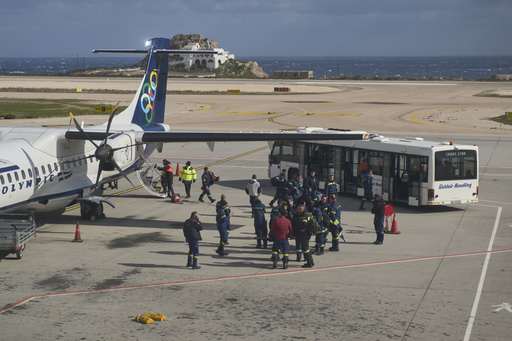SANTORINI, Greece — The volcanic island of Santorini is experiencing a series of frequent earthquakes, with tremors occurring every few minutes overnight and continuing into Wednesday. In response, authorities are enhancing emergency preparedness measures as recent seismic activity may indicate the possibility of a larger earthquake on the horizon.
Civil Protection Minister Vassilis Kikilias attended an emergency meeting in Athens with security officials, scientific experts, and the prime minister to discuss the situation. During the live-televised session, he stated, “We are obliged to draw up scenarios for better and for worse.” A coast guard vessel and a military craft are on standby in the region, ready to assist if evacuation becomes necessary.
Greece is situated in a seismically active area, making earthquakes a common occurrence. However, the intensity and frequency of the recent quakes are uncommon for any part of the nation. While experts warn that predicting earthquakes accurately remains an impossibility, they cannot conclusively state whether the ongoing seismic activity between Santorini and the nearby island of Amorgos is an indication of a larger quake to follow or simply part of a succession of minor or moderate tremors.
Prime Minister Kyriakos Mitsotakis acknowledged the anxieties of residents living in a region with continuous movement, urging them to remain calm under the circumstances. To mitigate potential dangers, authorities have restricted access to various coastal areas and closed schools across several nearby islands. Public gatherings within Santorini have been prohibited, and access to popular clifftop viewpoints has been limited, which are major attractions for tourists.
As tremors measuring between magnitudes 3 and 5 have been unsettling both residents and visitors since the weekend, many have chosen to leave the island out of fear. In response to the increased demand for travel, ferry and airline services have amplified their schedules; however, the weather conditions hindered ferry operations on Wednesday.
Fortunately, despite the ongoing seismic activity, no injuries or severe damages have been reported. In addition, the Ministry of Digital Governance has activated a mobile satellite communications unit to support Santorini’s infrastructure, and other telecom companies are distributing generators and mobile units to the island and nearby areas like Anafi, Amorgos, and Ios.
Moreover, authorities have launched an online platform — mysafetyplan.gov.gr — equipped with maps identifying safe gathering spots for citizens in the event of a natural disaster. While monitors have detected increased volcanic activity in Santorini’s caldera, scientists have affirmed that this is separate from the recent seismic incidents. They deem it unlikely that the current activity will provoke either of the two nearby volcanoes.



